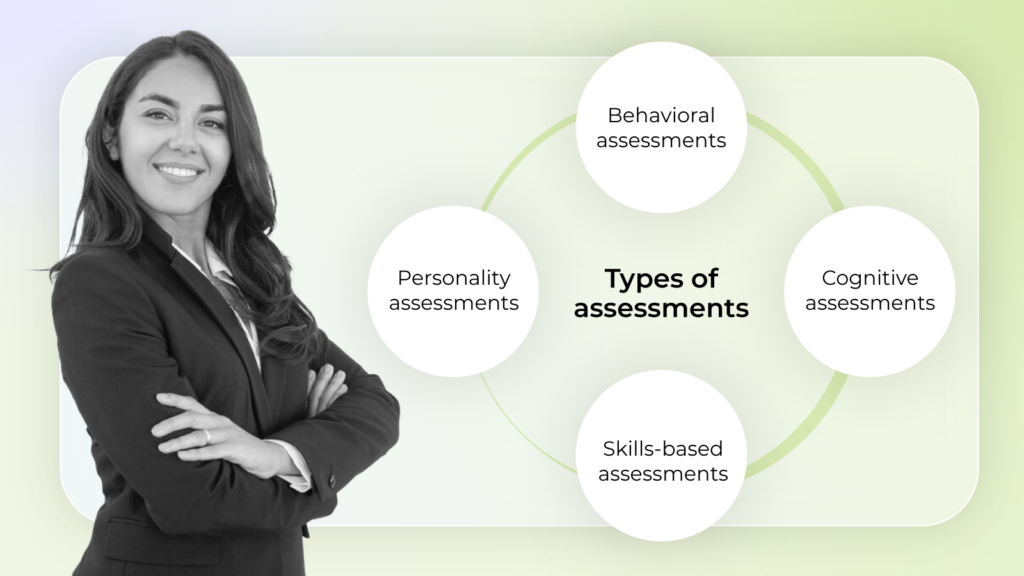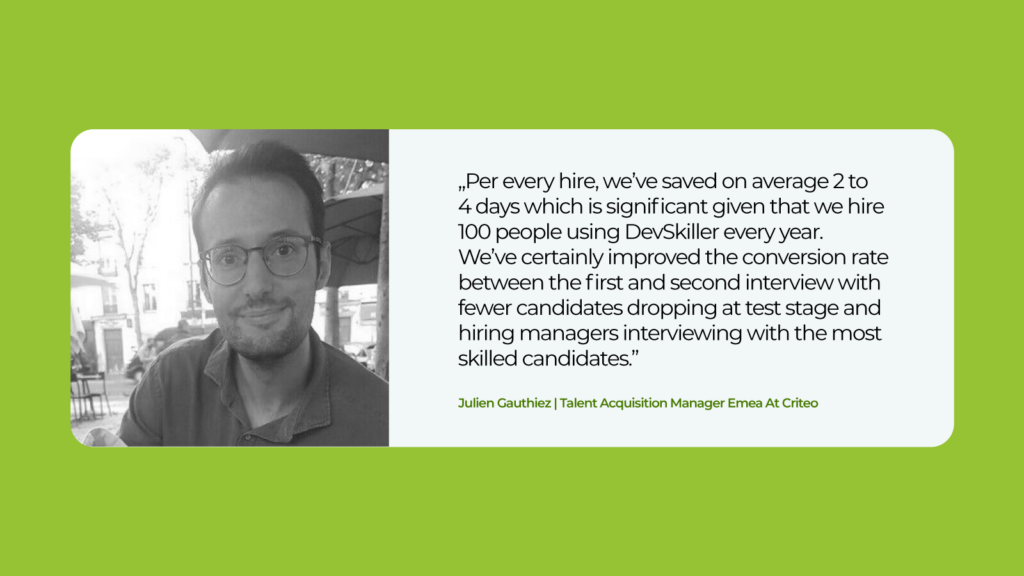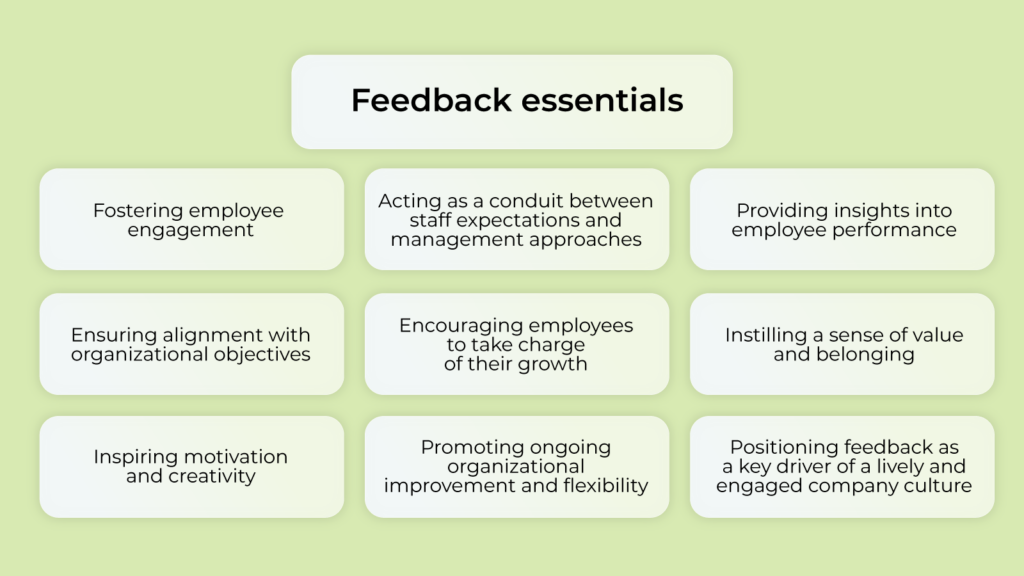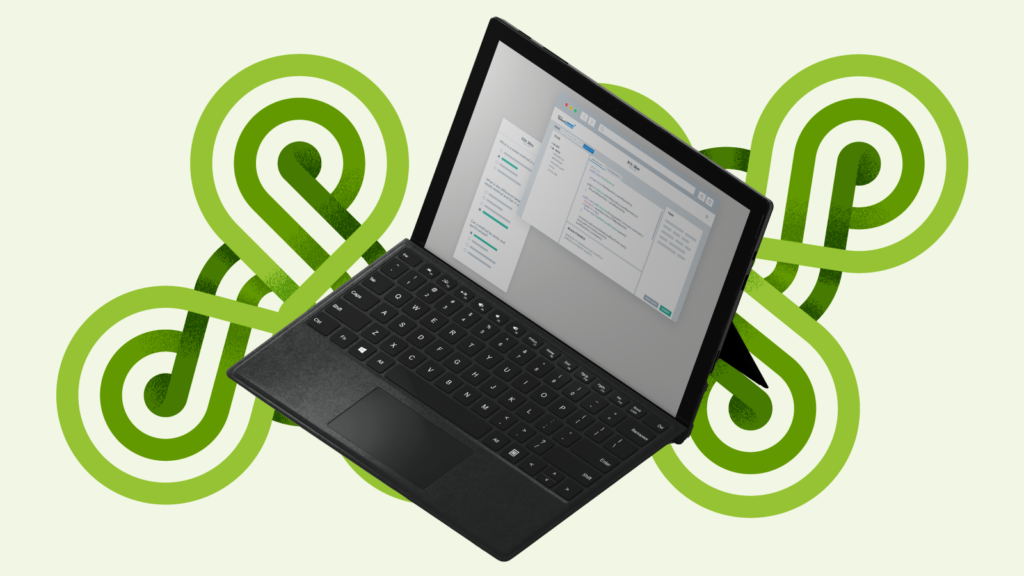Get to understand the world of employee assessment tools

Top executives increasingly rely on advanced employee assessment tools to drive excellence and navigate the complexities of human capital. These tools are crucial as businesses evolve, making talent evaluation and development a strategic priority.
This article explores employee assessments’ importance, variety, and impact on company success. We will discuss how these assessments align with business goals, cultural fit, and provide a financial argument for their use, while also considering legal and ethical boundaries.
Aimed at CHROs, CEOs, CTOs, and Lead Engineers, the article offers insights for leaders seeking to improve their teams through effective employee assessment. Join us on this informative journey to enhance your leadership and workforce.
- The importance of employee assessment
- Aligning assessments with business goals
- Cultivating a culture of excellence through assessments
- Implementing effective assessment systems
- Metrics and analytics: Measuring the impact of assessments
- Assessing for adaptability and resilience
- Implementing assessment tools: A step-by-step guide
- Overcoming resistance to assessment tools
- Conclusion – Embracing the future with the right tools
The importance of employee assessment
Understanding employee assessment tools
This section outlines the essentials of employee assessment tools, from time-tested methods to modern innovations. We’ll cover the primary aim of these tools: evaluating employee skills, competencies, and behaviors.
While traditional approaches like performance reviews and 360-feedback persist, advancements in technology have introduced data analytics, AI, and digital platforms into the mix. These advancements provide deeper insights into performance and potential.
Our exploration will offer a concise yet comprehensive view of these tools’ roles in driving organizational success.
Types of assessments: A comprehensive look
Employee assessments come in many forms, each serving a different purpose. We’ll examine the most common types of assessments, such as:
- Behavioral assessments: These tools help predict a candidate’s fit within the company culture and their potential for success in a specific role.
- Cognitive assessments: Often used to measure reasoning abilities, memory, and other mental faculties that are critical for problem-solving and decision-making roles.
- Skills-based assessments: Designed to evaluate a candidate’s proficiency in specific areas relevant to the job, such as technical skills or language fluency.
- Personality assessments: Employed to gauge personality traits and how they might affect an individual’s work style and interactions with colleagues.

Validity and reliability of assessment tools
Understanding the importance of validity and reliability in assessments is essential for those in charge of hiring and decision-making. Validity ensures an assessment measures what it’s intended to, evaluated by checking if it predicts job performance (criterion-related validity) or measures the right psychological construct (construct validity).
Reliability refers to the consistency of assessment results, which can be measured by seeing if results stay the same over time (test-retest reliability) or across different items within the tool (internal consistency). High standards of validity and reliability, backed by industry benchmarks and research, lead to accurate and consistent data for informed decision-making.
Integrating assessments into the hiring process
This section focuses on seamlessly integrating candidate assessment tools into current hiring procedures to enhance decision-making with deep insights into a candidate’s fit for the role without overwhelming them.
It’s about choosing tools that are both effective and user-friendly to support rather than complicate the recruitment process. This involves tailoring the assessment stages to match the specific skills and qualifications needed for the job. Hiring managers should balance the timing, frequency, and complexity of assessments to avoid exhausting the candidates and to maintain a positive testing experience.
Openly sharing the purpose and importance of these assessments with candidates can foster transparency, enhancing their view of the company and their involvement in the process.
Thoughtful integration of these tools leads to better hiring decisions and a more efficient recruitment workflow, ultimately resulting in the selection of candidates who are likely to excel and add value to the organization’s objectives.
Aligning assessments with business goals
The strategic value of employee assessments
Understanding the role of employee assessments in achieving strategic business goals is vital for a company’s success.
This analysis reveals how assessments go beyond gauging individual skills to become a key element in the hiring strategy. Integrating assessments into hiring and performance reviews aligns employee attributes with corporate objectives.
A robust assessment protocol offers insights into a candidate’s growth potential and strategic fit. This leads to smarter hiring decisions, placing the right people in roles where they can actively support the company’s mission.
Such alignment ensures employees contribute meaningfully not just to immediate tasks but also to long-term goals.
Regularly applying these tools promotes a culture focused on performance and strategic aims, marrying individual progress with the company’s direction, and highlighting the hiring process’s role in achieving strategic coherence.
Case studies: Transformative impacts
Criteo, a global leader in commerce marketing, excels in personalized advertising solutions for B2B companies across various sectors. They annually hire around 100 technical professionals with the aid of DevSkiller, a platform that has revolutionized their hiring process by automating technical screenings, leading to faster, more efficient hiring outcomes.
Previously, Criteo faced challenges with their technical hiring, such as the inability to track case study completion, limited insights into candidates’ approach to tasks, and inconsistent screening across locations. These issues resulted in delays and a higher number of unnecessary interviews.
By implementing DevSkiller in 2017, Criteo now enjoys a streamlined recruitment process, saving 2-4 days per hire and improving the interview-to-hire ratio. The platform is utilized by their talent acquisition teams across 15 global locations, enhancing the consistency of the recruitment software screening process.

DevSkiller has provided Criteo with a more consistent tracking system, reduced the number of interviews without affecting hire rates, and improved candidate experience with a user-friendly, technologically advanced format. The operational and HR departments have benefitted from reduced pressure, leading to cost and time savings and increased productivity.
Julien Gauthiez, the Talent Acquisition Manager EMEA at Criteo, notes a significant reduction in candidate dropout rates and delays in the hiring process. The standardized testing platform and technical assignments are now consistently used by hiring managers, fostering collaboration in test creation across different regions and the hiring teams together.
Candidates have welcomed the flexibility to take tests at their convenience and the feature that allows them to track their progress in real-time, contributing to a positive candidate experience throughout the technical hiring process.
Predictive analytics: The forecasting advantage
The introduction of predictive analytics in HR has transformed how companies manage and foresee talent development. This segment explores how recruitment assessment tools collect data crucial for predictive analysis.
These advanced tools provide detailed insights into candidates’ skills and behaviors, improving the prediction of their job performance and career growth.
They analyze various data points from evaluations, uncovering trends and patterns with the help of computational power.
This empowers HR professionals to make well-informed, strategic choices in hiring and employee development.
A data-centric approach enables the creation of a strong talent pool, ready to thrive in a dynamic business world.
Moreover, predictive analytics refine the recruitment process to be proactive in sculpting the future workforce, crucial for succession and leadership planning, and adapting to future workplace shifts.
Cultivating a culture of excellence through assessments
Assessments and organizational culture
Assessments are crucial in fostering a culture of excellence, and aligning individual performance with organizational standards.
They act as a reflective and directive force in an organization’s cultural framework, setting clear, aspirational benchmarks that delineate valued behaviors and outcomes.
More than just evaluative measures, assessments guide personal and professional growth.
Their regular and thorough application promotes an environment of ongoing betterment, making excellence a practical, observable aspect of daily work.
This approach also helps identify and nurture high-potential individuals who exemplify and can disseminate the sought-after culture, ingraining a standard of excellence throughout the organization.
Fostering diversity and inclusion
Assessment tools are instrumental in advancing diversity and inclusion in the workplace by offering an objective basis for evaluating individuals, thereby diminishing unconscious bias and fostering inclusivity.
By focusing on talents and skills, such tools help create a culture that values diversity as a vital asset. They enable the discovery of candidates from diverse backgrounds and viewpoints, thereby enhancing the organization’s talent pool.
Additionally, these tools assist in recognizing and removing inadvertent obstacles to career advancement, ensuring equitable growth opportunities.
In effect, assessments are pivotal in steering diversity and inclusion initiatives, contributing to a more equitable workplace that thrives on a multitude of perspectives and ideas.
Enhancing employee engagement through feedback
Feedback mechanisms are essential for fostering employee engagement, acting as a conduit between staff expectations and management approaches.
They provide employees with insights into their performance, ensuring alignment with organizational objectives and instilling a sense of value and belonging.
Regular and considerate feedback encourages employees to take charge of their growth, inspiring motivation and creativity.

Additionally, seeking feedback from employees garners valuable insights, promoting ongoing organizational improvement and flexibility.
This interactive process positions feedback as a key driver of a lively and engaged company culture, enabling all employees to flourish and contribute maximally.
Using assessments to drive retention
Strategic assessments contribute significantly to employee retention by helping organizations tailor their approach to workforce needs and talents.
Regular skill and satisfaction evaluations pinpoint development and advancement opportunities, crucial for maintaining engagement and commitment.
Proactive identification of issues through assessments can preempt turnover.
Additionally, personalized career planning aligns with both employee goals and business objectives, enhancing loyalty and purpose.
The deployment of these tools demonstrates a company’s commitment to its employees’ futures, serving as a strong incentive for staff to remain and prosper within the organization.
Best practices for assessment-driven development
Assessment-driven development leverages evaluations to identify employees’ strengths and improvement areas, shaping their professional growth.
This continuous process uses data to customize development plans that meet both individual and organizational goals.
Transparency regarding assessment criteria and results is vital, clarifying feedback and career impacts for employees.
Linking assessments to practical learning opportunities, such as training and mentorship, allows employees to act on feedback.
Encouraging self-assessment also empowers employees to take charge of their development, fostering a culture of lifelong learning.
Moreover, ensuring assessments are fair and inclusive guarantees that all employees have equal opportunities to advance and succeed.
Implementing effective assessment systems
Choosing the right tools for your organization
Selecting the optimal tools for your organization’s hiring and development processes is critical in streamlining workflows and enhancing overall performance.
Devskiller stands out as a premier choice, boasting a robust platform that specializes in testing technical skills through a comprehensive suite of programming tasks and challenges.
By simulating real-world scenarios, Devskiller enables organizations to assess candidates and employees not just on theoretical knowledge, but on practical, job-relevant abilities.
This approach aligns with the market’s demand for proficiency in current technologies and methodologies.
The platform’s versatility allows for customization of assessments to match specific role requirements, ensuring a precise fit for each position.
Moreover, Devskiller’s analytics provide deep insights into skill levels, helping to make informed decisions that contribute to a company’s strategic objectives.
The tool’s emphasis on a user-friendly experience for both administrators and test-takers further cements its status as a top-tier solution for organizations aiming to attract, evaluate, and develop the best tech talent in a competitive landscape.
Legal and ethical considerations
Integrating assessments into company practices demands adherence to legal standards and ethical integrity.
Compliance with employment laws, including data protection, anti-discrimination, and equal opportunity regulations, is essential and varies across jurisdictions.
Ethically, assessments should be fair and unbiased, offering equal opportunity for all candidates, including those with disabilities, and avoiding content that could disadvantage any group.
Ethical data use mandates confidentiality, purpose-specific data use, and constructive feedback. Following these legal and ethical guidelines protects against legal and reputational risks and builds a culture of trust and integrity, key to sustained success.
Evaluating and revising assessment strategies
Continual refinement is key to an effective assessment strategy, ensuring it stays relevant to the organization’s goals.
It involves routinely analyzing the effectiveness of current assessments in talent selection and development, monitoring KPIs to ensure high-scoring employees meet performance expectations, and aligning with business objectives.
Stakeholder feedback is vital for identifying areas to enhance, which may include updating content for current job roles, integrating new technologies, or improving user engagement.

By consistently updating their assessment strategies, organizations maintain a competitive edge in talent management and prepare their workforce for evolving business challenges.
Metrics and analytics: Measuring the impact of assessments
Defining success metrics
Measuring the efficacy of assessment tools in an organization requires setting clear success metrics that encompass both immediate results and long-term trends in line with strategic objectives.
Essential KPIs include quality of hire, time-to-hire, turnover rates, and post-assessment performance. Advanced analytics can shed light on the effectiveness of various assessments, correlate assessment scores with job performance, and calculate the ROI of the assessment process.
Regular review of these metrics enables HR to spot trends, make informed choices, and refine assessments for greater organizational impact, transforming them from procedural necessities to strategic assets in talent management.
Data collection and analysis
Informed decision-making in HR is underpinned by robust data gathering and detailed analysis, utilizing an array of assessment tools like performance evaluations, skill tests, personality inventories, and 360-degree feedback.
Rigorous analysis of this data is essential to identify trends and areas for improvement.
Advanced statistical techniques validate the assessments’ reliability and accuracy in measuring intended competencies.
Additionally, data analytics helps to draw connections between assessment outcomes and business performance, empowering HR leaders to refine talent management strategies.

A commitment to a data-driven approach not only sharpens assessment accuracy but also promotes a culture of ongoing learning and development.
Employee assessments are critical for workforce insight and development, yet they require careful handling to overcome inherent challenges and enhance their effectiveness.
Addressing bias and ensuring fairness
Bias can stem from many sources within employee assessments. It is crucial to recognize and address these to ensure a fair and objective process.
Strategies like structured interviews, standardized scoring rubrics, and training assessors to recognize their unconscious biases can help.
Additionally, using a diverse panel of reviewers and cross-referencing assessment outcomes with objective data are practical steps toward mitigating bias.
Managing employee apprehension towards assessments
Assessments often induce stress among employees, who may see them as punitive rather than developmental.
To counter this, it’s essential to position assessments as a tool for personal and professional growth.
Transparent communication about the purpose, process, and benefits of assessments can alleviate anxiety.
Moreover, providing constructive feedback and development resources post-assessment can underscore their value in the employees’ growth trajectory.
Ensuring compliance with legal standards
Assessments must adhere to employment laws and regulations to prevent legal repercussions. Organizations need to ensure that their assessment procedures are compliant with relevant laws, which may include those regarding discrimination and privacy.
Regularly updating the assessment criteria and processes in line with the latest legal standards is also vital. Legal consultation can be invaluable in maintaining compliance and safeguarding against litigation.
Integrating assessments with other HR systems
A significant technical challenge is integrating assessments with existing HR systems to streamline workflows and data management.
This requires careful planning, a clear understanding of different systems’ capabilities, and often, the use of integrated software solutions.
Successful integration can enhance data accuracy, reduce administrative burden, and provide a cohesive view of employee performance and development needs.
Evaluating the effectiveness of assessment tools
For assessment tools to stay relevant, they must be continuously evaluated and refined.
This involves correlating assessment results with actual performance, soliciting feedback, and keeping updated with the latest assessment techniques.
The goal is to enhance the tools’ accuracy and relevance, aligning them with both the organization’s and employees’ needs.
Proactively tackling these challenges allows organizations to use assessments as a strategic asset for workforce development and growth.
Integrating these tools with business goals is critical for maintaining a competitive advantage and ensuring organizational success.
Aligning assessment outcomes with business goals
The crux of strategic assessment integration lies in aligning employee evaluations with the company’s broader objectives.
This alignment ensures that the workforce development is in tandem with the direction of business growth.
By setting assessment criteria based on key performance indicators (KPIs) and long-term goals, businesses can foster a workforce that is not only high-performing but also strategically aligned with the organizational vision.
Customizing assessment tools for strategic objectives
The one-size-fits-all approach is obsolete when it comes to assessments. Customization allows for the nuanced evaluation of skills and competencies that drive specific strategic objectives.
Whether it’s for leadership roles in the C-suite or specialized technical positions, tailoring assessments to the unique demands of various departments ensures a targeted development of capabilities that propel specific business units—and therefore, the entire organization—forward.
Communicating the value of assessments to stakeholders
Stakeholders, be they investors, board members, or employees, must understand the value assessments bring.
Articulating this value involves translating complex data into clear, actionable insights.
Demonstrating how assessments lead to better hiring decisions, improved employee performance, and ultimately, increased ROI, can cement their worth in the stakeholder’s perspective.
Future-proofing assessment strategies
To maintain a competitive edge, assessment strategies must be flexible and forward-thinking.
Keeping abreast of industry trends allows for the evolution of assessment tools to meet the evolving strategic needs of talent selection and development.
Integrating assessments into business strategies leads to a proactive and results-oriented approach to long-term goals.
Moreover, the rise of big data provides HR professionals with extensive assessment data, enabling informed decision-making when used judiciously.
Data-driven decision-making in HR
Data from assessments can offer invaluable insights for HR professionals.
When used correctly, this data can guide critical decisions regarding hiring, promotions, professional development, and succession planning.
Leveraging this data can lead to more objective decisions, reduced biases, and a workforce that is better aligned with the company’s goals.
Interpreting assessment data for strategic decisions
However, having data is only half the battle; interpreting it correctly is vital. Misinterpretation can lead to counterproductive decisions.
This section will delve into the importance of accurate data interpretation and how to avoid common pitfalls that may lead to erroneous conclusions.
Linking assessment data to performance outcomes
One of the key challenges in utilizing assessment data is drawing a direct line to performance outcomes.
This segment will explore methodologies to ensure that the insights gained from assessments are not only valid but also reliable predictors of future job performance and overall business success.

Training decision-makers to utilize assessment insights
Finally, having data and knowing what to do with it are two different skill sets.
The concluding section will address the importance of educating senior decision-makers and HR professionals in the art and science of using assessment data.
Providing them with the necessary tools and knowledge will empower them to make informed decisions that can significantly enhance the strategic capabilities of the HR function.
In the era of information, the ability to use data from employee assessments effectively can be a game-changer for organizations, paving the way for a more strategic, informed, and successful approach to HR management.
Assessing for adaptability and resilience
As companies navigate through rapid technological changes, economic shifts, and the global market’s unpredictability, adaptability and resilience stand out as vital traits for organizational sustainability and success.
The significance of adaptability and resilience in the modern workplace
The modern workplace demands flexibility and a capacity for rapid learning.
Employees who demonstrate adaptability can shift strategies, embrace new technologies, and adjust to new processes or market conditions with ease.
Similarly, resilience enables individuals to recover from setbacks without significant loss of productivity. These traits are not just beneficial but necessary for businesses aiming to thrive in an environment of perpetual change.
Methods for assessing adaptability and resilience
How do we measure such intangible qualities?
This article explores various assessment methods that can help identify the levels of adaptability and resilience in employees.
From psychological assessments and behavioral interviews to situational judgment tests and 360-degree feedback, each method offers unique insights into how employees may respond to change and stress.
Integrating adaptability and resilience into the recruitment process
The recruitment phase is critical for selecting the best candidates, with high adaptability and resilience potential. This section discusses how to embed adaptability and resilience assessment into the hiring process, ensuring that new hires are not only skilled but also possess the soft skills needed to thrive.
Developing adaptability and resilience in existing employees
Assessment is not solely for recruitment; it’s also a starting point for development. This article provides strategies for nurturing these qualities in your current workforce through targeted training programs, resilience workshops, and creating a company culture that supports continuous learning and psychological safety.
The role of leadership in fostering a resilient culture
Leaders play a key role in setting the tone for adaptability and resilience within the organization. This section examines how leaders can model resilient behaviors, communicate effectively during times of change, and provide the support systems necessary for employees to develop these competencies.
Implementing assessment tools: A step-by-step guide
When an organization decides to implement new assessment tools, the process involves careful planning and execution to ensure that the tools are effective and well-integrated into the company’s systems. Here is a guide to help navigate the complexities of this implementation.
Step 1: Define your objectives
Clarify what you want to achieve with the assessment tools. Whether it’s improving recruitment, employee development, or organizational effectiveness, having clear objectives will steer the direction of the implementation process.
Step 2: Research and select the right tool
When exploring the market for suitable assessment tools, it’s vital to evaluate them based on several critical factors. Look for tools that stand out in terms of validity and reliability, ensuring they accurately measure the competencies they claim to.
User-friendliness is another essential aspect, as it facilitates a smoother experience for both the administrator and the candidate.
Cost-effectiveness should also be a consideration, providing you with value without compromising on quality.
Additionally, the kind of data the tools provide should support informed decision-making, offering clear insights into candidate cognitive abilities.
Moreover, in today’s diverse workplace, the tools must be designed to be unbiased and inclusive, promoting fairness and equality.
In this context, platforms like DevSkiller have been recognized for delivering a comprehensive suite of online assessment tools and solutions that tick all these boxes, helping to streamline the recruitment process and enhance the accuracy of talent acquisition and development decisions.
Step 3: Gain stakeholder buy-in
For successful implementation pre employment assessment tools, you need the support of key stakeholders. Communicate the benefits and potential ROI of the best pre employment assessment tools to executives, managers, and employees. Address any concerns and highlight the value the tools will bring.
Step 4: Pilot the assessment
Before a full rollout, test the tool with a small, diverse group within the organization. This pilot phase will allow you to gather feedback, make adjustments, and foresee any broader implementation challenges.
Step 5: Train the users
Training is critical for those who will administer the assessments and those who will be assessed. Ensure comprehensive training so that everyone is comfortable with the tools, understands the process, and knows how to interpret the results.
Step 6: Integrate with existing systems
The new tools should work seamlessly with your current HR systems. Plan for the technical integration with performance management systems, learning management systems, and other HR software.
Step 7: Communicate the process
Communicate to the entire organization how the assessments will be conducted, the expectations, and how the data will be used. Transparency will help in reducing apprehension and gaining trust in the process.
Step 8: Launch the tool
After the pilot and training, you are ready to launch the tool organization-wide. Ensure ongoing support is available for any questions or issues that arise pre employment testing tool.
Step 9: Monitor and evaluate
Continuously monitor the use of the assessment tools and collect feedback. Evaluate the impact pre employment assessment tools and tests against your initial objectives and make necessary adjustments to improve the process.
Step 10: Refine and evolve
Assessment tools are not set-and-forget solutions. They need to be refined based on evolving organizational needs, employee feedback, and the changing business environment.
Implementing new assessment tools takes time and effort, but when done correctly, it can lead to better, informed hiring decisions made, more targeted employee development, and ultimately, a more effective organization.
Overcoming resistance to assessment tools
Addressing resistance to HR assessment tools is crucial for successful implementation. Resistance often arises from misconceptions, fear, or concern about career impacts.
Open communication about the tools’ objectives and benefits is essential, highlighting their role in promoting growth and organizational alignment, not penalizing individuals. Educating staff on how the tools function and their benefits can clarify the process, with workshops showcasing their ease and relevance.

Employee involvement in choosing and deploying tools can also foster acceptance. Sharing positive outcomes from assessments can further alleviate concerns. Transparency about data use ensures trust, intending to demonstrate the tools’ value to both the organization and its people.
Conclusion – Embracing the future with the right tools
In conclusion, the integration of employee assessment tools within an organization is not just a trend but a transformative force that redefines how businesses engage with and grow their human capital.
The meticulous analysis presented in this article underscores the vital role that these tools play in aligning employee performance with business objectives, fostering cultural coherence, and driving financial success.
Share post